Stephen Fry and social media launched this rare parrot to stardom, and now this tech-savvy kakapo puts fame to good use
Back in 2009, Stephen Fry visited New Zealand’s Codfish Island with zoologist Mark Carwardine to film BBC2’s Last Chance to See, a documentary about animals on the edge of extinction.
Now, with almost 6.5 million views of ‘Shagged by a rare parrot’ on YouTube, their encounter with Sirocco, the flightless parrot, has achieved phenomenal worldwide coverage. Not bad for a species that previously wasn’t well-known even in New Zealand, despite its international critically endangered status.
Today, Sirocco features on the NZ Department of Conservation blog, he has his own Facebook page with 155,000 likes and a Twitter account, as you might expect of a bird.
He shares photographs, video clips and news on New Zealand’s wildlife, as well as events you can get involved in. Sirocco’s cheeky character is reflected in his Facebook posts.
Yes, it is humanising him, but this engaging approach connects people with nature, especially young people who will be responsible for protecting our wildlife in the future. We all enjoy a story and Sirocco certainly has a heart-warming story.
Sirocco kakapo’s early bond with people
Born on March 23, 1997, on Codfish Island, Sirocco became the first male kakapo to be hand-raised when a respiratory illness at three weeks old meant he needed special care. The following November, he was released to roam the island and survive on his own. It was soon clear that Sirocco had been imprinted on humans, having spent his early life with people rather than kakapo. This unintended bond with people was to mark him out for a special role in protecting his species.
Why this unique ground-dwelling parrot is critically endangered
The heaviest parrot in the world, the kakapo is a nocturnal bird that can live to a ripe old age of 60+. A herbivore that eats fruit, roots and leaves, unusually, this parrot can no longer fly, having evolved into a ground-nesting bird in the absence of predators. Camouflage is the kakapo’s main form of defence, the bird’s moss green feathers blending in with its bush habitat. The kakapo can still climb trees, but this wasn’t protection enough on mainland New Zealand where they were wiped out with the arrival of people.
Early Polynesian settlers hunted the kakapo for meat and plumage, and European settlers destroyed their habitat, clearing bush for farming in addition to hunting the bird for food. But the biggest threat came from the rats, cats and stoats the settlers brought with them. Before the arrival of Europeans, the kakapo had developed ground-nesting habits to evade attack from its only predator, the giant eagle. While this adaptation improved the kakapo’s chances against the eagle, their eggs and chicks became an easy target for the non-native mammals introduced to the mainland by the settlers.
A mating display that puts even the most persistent suitors to the test
The kakapo is known for its unusual mating habits. The male digs a bowl in the earth in summer and then makes loud booming sounds over a three-month period to attract a mate. The low-volume call can travel several kilometres. It’s an exhausting business, especially when there aren’t many females left to go round; older males often go unheard. Although he lives as a wild bird, Sirocco hasn’t enjoyed any mating success, despite his tireless booming shown in the award-winning wildlife documentary From Dud To Stud.
Sirocco becomes ‘spokesbird’ for conservation
But all is not lost for Sirocco to help his species. His overnight rise to stardom on the back of Stephen Fry has given him the very important role of ambassador. In 2010, Prime Minister John Key appointed Sirocco as New Zealand’s spokesbird for conservation and he’s doing a great job that politicians could learn from. Sirocco is using his influence and charisma to bring more funds to conservation, and help secure his species for future generations.
Sirocco goes on tour to Zealandia
Like all superstars, Sirocco goes on tour to meet his fans. His health and welfare are paramount with strict rules on how he is fed, handled and housed. Every year, he visits Wellington’s Zealandia, the fully fenced 225-hectare eco-sanctuary. His visits create considerable excitement with the chance to see not only a rare parrot endemic to New Zealand but a very special one.
Social media is a powerful tool for raising awareness, and Sirocco’s popularity shows how Facebook and Twitter can be used to spread the word and help protect our wildlife. Television is another powerful medium for conservation communication. Eight-year-old American Natalie Shaheen fell in love with kakapo when she saw a TV documentary. Her affection was both instant and long-lasting. When she turned 13, Natalie asked for donations instead of gifts for her coming-of-age and then, with heart-warming generosity, she donated $3,400 to the Kakapo Recovery program.
Predator-free islands provide a haven for kakapo recovery
Kakapo Recovery is a joint conservation effort between the Department of Conservation, New Zealand Aluminium Smelters and Forest and Bird.
In 1990, there were only 46 Kakapo left in the world, and now there are 125 thanks to the recovery program.
Kakapo colonies are managed by a small team of dedicated conservationists in remote predator-free island habitats. Codfish Island is a rimu forest habitat similar to the kakapo’s original Stewart Island habitat. The suitability of Codfish Island was demonstrated by the phenomenal breeding event of 2002, when the kakapo population was boosted with 24 chicks in a few months, and again in 2009 when 33 chicks hatched.
Breeding is triggered by rimu and beech seed masts when food is plentiful
But with breeding only occurring every 2 to 4 years, it’s a slow recovery. There are indications of rimu and beech seed masts that will trigger breeding this summer, which will help soften the blow of Ellie’s recent death at only 16 years old.
There are two other kakapo habitats—Anchor Island in Fiordland National Park with beech and rimu forest and Little Barrier Island near Auckland. Kakapo were introduced here in 2012 to see if they could establish without supplementary food now that rats have been eradicated, feral cats having been removed in the 1970s. Codfish Island and Little Barrier Island are out of swimming range of mainland rats and offer long-term survival prospects for kakapo.
Breakthrough in freezing kakapo sperm will help insemination programs
Exciting news suggests that next year, New Zealand scientists will be able to collect and freeze kakapo sperm to help with breeding programs and genetic diversity, providing a breakthrough in kakapo species recovery. For years, researchers have been working on insemination programs through trial and error, but with only one success in 2009. Collecting and inseminating kakapo sperm is difficult enough, and freezing sperm would increase the chance of fertilisation success.
Sirocco is certainly putting social media to good use by spreading the word about wildlife conservation. If you would like to help conserve the world’s rarest parrot, Sirocco and the Kakapo Recovery team would be delighted by your support!
Post update April 15, 2016: A record breeding season has just come to a close as the last egg hatched on April 8. So far, 38 chicks have survived, but the next six months will be crucial before the new chicks can be counted as additions to the population of 123 adult birds. In a press release, New Zealand Conservation Minister Maggie Barry emphasises the importance of the Kakapo Recovery team to the parrot’s long-term survival.
“New Zealand owes the rangers and volunteers who have worked tirelessly through the season to date a vote of thanks. They are giving this special bird species the best possible chance of survival.”
Published on The News Hub July 21, 2015
Image credits:
Sirocco by Chris Birmingham (DoC) on Flickr/Creative Commons
Sirocco checks Facebook by DoC on Flickr/Creative Commons
Sirocco at 14 days by Don Merton on Flickr/Creative Commons
Sirocco munching manuka by Chris Birmingham on Flickr/Creative Commons
Kakapo chicks by Mike Bodie (DoC) on Flickr/ Creative Commons
Sirocco full length portait by Mike Bodie on Flickr/Creative Commons
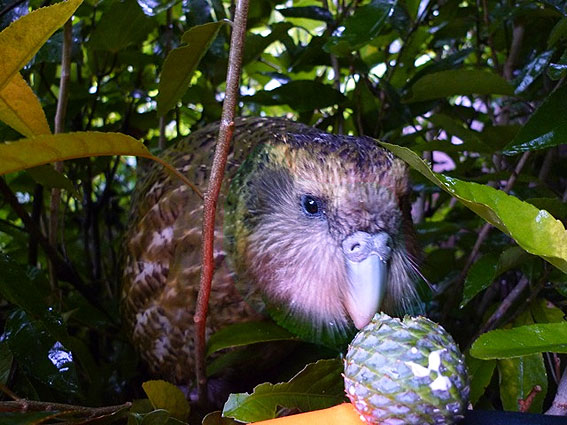
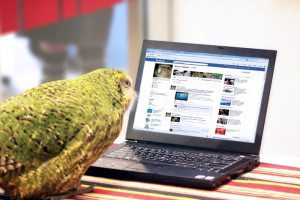
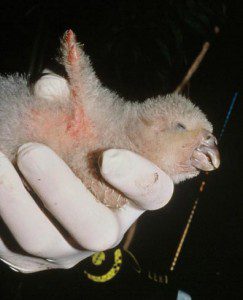
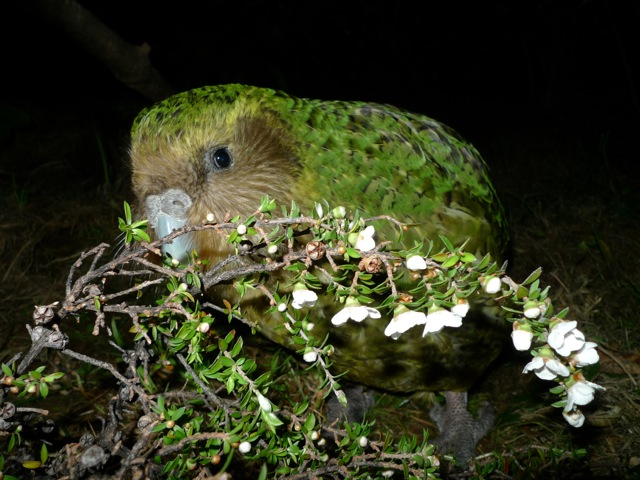
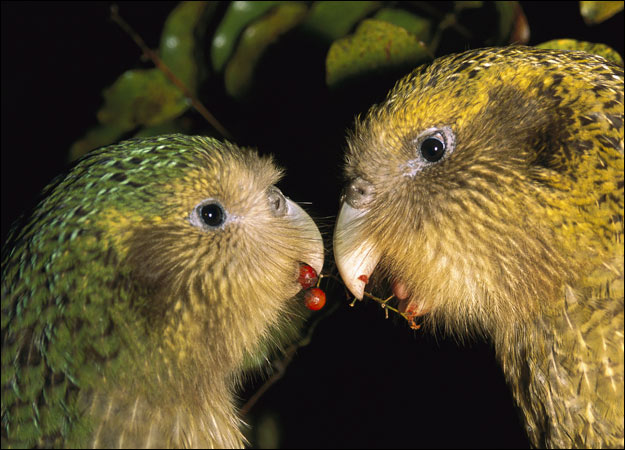
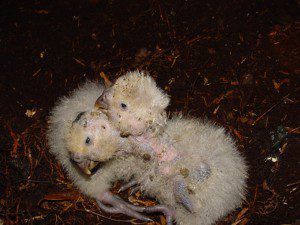
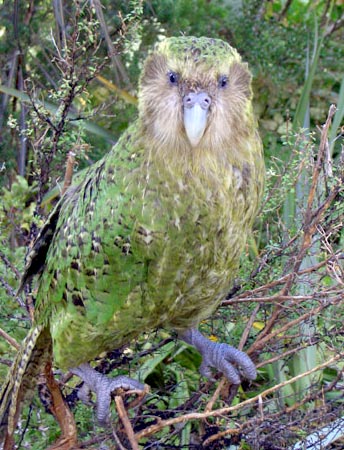
What a fabulous piece – both well written and uplifting. It’s great that Sirocco’s story has inspired wider passion for conservation, particularly in the younger generation. Let’s hope the breeding programme succeeds. And wouldn’t it be superb if Sirocco’s tale were used as a template to inspire further public enthusiasm for conservation among other species.
Thank you for your kind comments Jane! I follow Sirocco on Twitter myself – with his claw on the conservation pulse, he’s a good source for news! I agree that other species could be helped with a strong social media presence like this one. In fact, Alfie kaka is giving chase in NZ and in the UK, Bob the red squirrel is campaigning for the RSPB to get nature on the political agenda 🙂